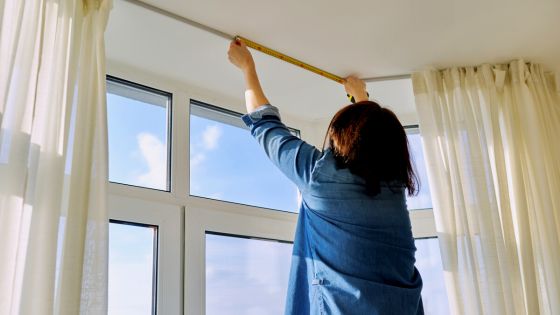Please wait...
How to Measure a Multi-Angled Bay Window
This entry was posted 18/09/2023

Bay windows with numerous angles and ample glass panes can be absolutely stunning. However, it's also the very complexity of their design that can make measuring them seem daunting. But fret not! In this post, we'll guide you through the step-by-step process. With our assistance, you'll have the precise dimensions in no time.
Selecting the Right Window Type
The initial step in measuring your bay window is determining its shape. Bay windows come in various shapes and sizes, categorized by the number of bends a track would need to follow their unique contours.
A bay with a 90-degree square shape is referred to as a two-bend bay. Other styles may have three, four, five, or even more bends. Some bay windows feature a single, graceful curve, often known as bow or semi-circular bays. Bay windows with multiple bends are referred to as multi-angled bays, and that's precisely what we'll focus on in this post.
How to Measure a Multi-Angled Bay Window
Before you start, take a moment to review our general advice on our Measuring and Ordering page. The crucial aspect is measuring at the height where you intend to install the track or pole, using a metal tape measure.
When dealing with multi-angled bays, keep these additional considerations in mind:
-
Consider Enlisting Assistance: Measuring may involve awkward corners and angles, so it's a good idea to have someone assist you. They can hold the tape in position or record the dimensions. Measuring on your own can be challenging.
-
Select the Optimal Measurement Point: We recommend taking measurements flush against the wall. This ensures we know precisely where the wall is and allows for any necessary adjustments to the track to ensure a perfect fit.
-
Ceiling Installation: If you plan to mount a track or pole on the ceiling, you can measure the wall, frame, or window sill—just remember to inform us how far forward of these measurements you'd like the track or pole to be.
The fundamental principle of measuring a multi-angled bay remains consistent, regardless of the number of bends or the product you've chosen. There are three key measurements to take:
1. Facet Lengths (A to B, B to C): These are the distances between each corner as you navigate around the bay.
Begin by measuring from the point where you want the track or pole to start to the first corner. From there, measure to the next corner, and so on. The final measurement should be from the last corner to where you want the pole to finish. Ensure you record these measurements as you progress. We recommend printing our product and bay shape page, which provides boxes for you to fill in along with a bay window diagram.
2. Cross Measurements (A to C, B to D): Taking cross measurements helps us understand the angles and serves as a double-check for your other dimensions.
The number of measurements required depends on the number of bends in your bay window. Nevertheless, the basic idea remains the same. Start by measuring from where you want the track or pole to begin to the second corner, skipping the first corner and moving diagonally across the bay. Then, measure from the same point to the third corner, if there is one, and so forth. Once there are no more corners, measure the baseline, which is the distance from where you want the track to start to where you'd like it to end. Repeat this process from the point where you'd like the track to finish, going back across the bay to the starting point.
3. Angles: While not mandatory, providing angle measurements allows us to ensure absolute accuracy, even if an error occurs. We can identify any measurement discrepancies and correct them without needing to contact you. To measure the
angles, download our free protractor
Once you have all your measurements, enter them on our website following the guidelines on our Measuring and Ordering page.
If you require any assistance with measuring or placing your order, don't hesitate to contact us on 01494 460198
This entry was posted on 18/09/2023

